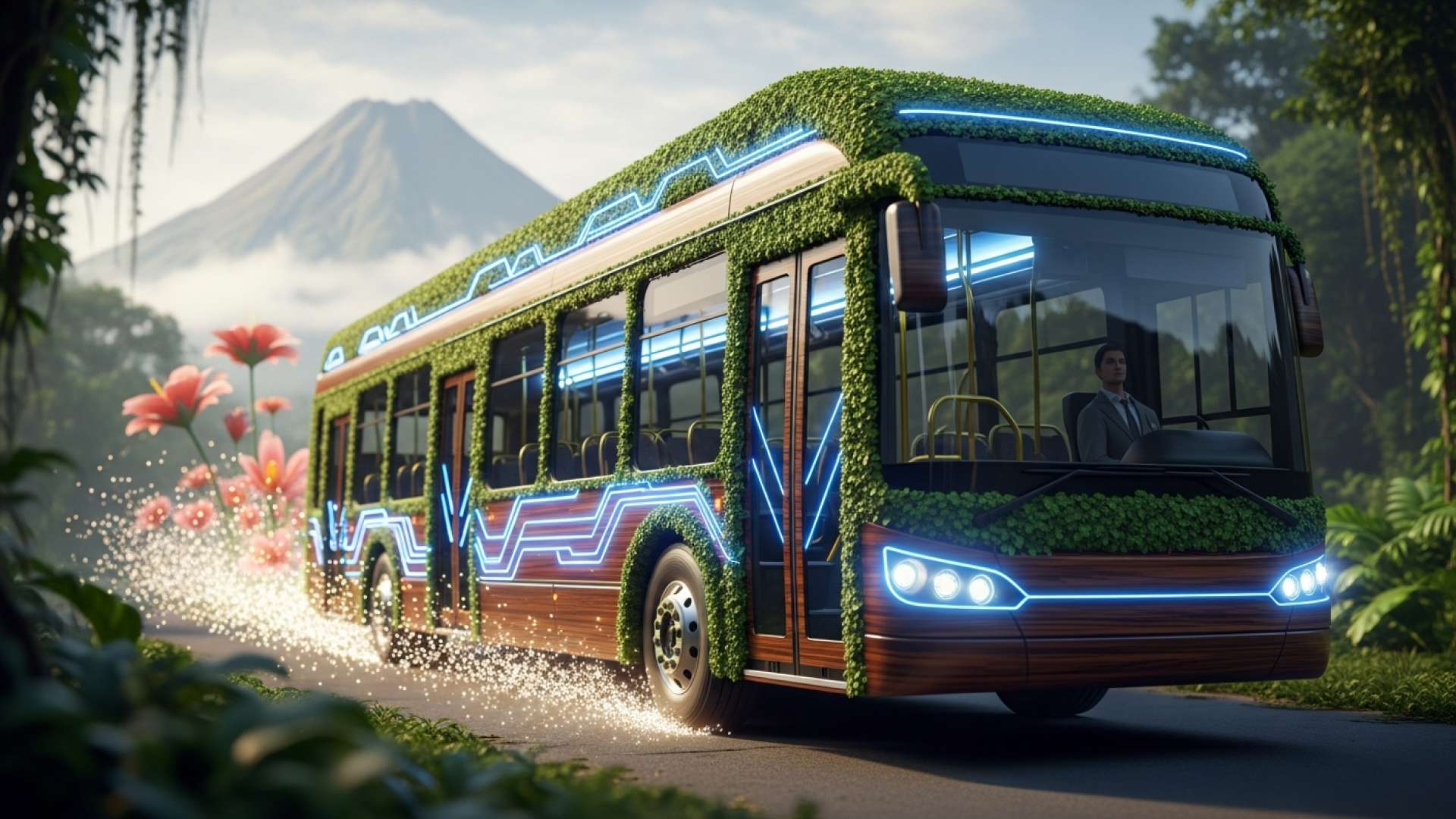San José, Costa Rica — SAN JOSÉ – The Government of Costa Rica has formally committed to a bold new environmental target, aiming for 20% of the nation’s total light vehicle fleet to be fully electric by 2035. The plan, presented to the United Nations, is a cornerstone of the country’s updated decarbonization strategy and underscores a continued focus on transforming personal transportation to combat climate change.
This ambitious goal was detailed in the country’s Nationally Determined Contribution (NDC) plan, a formal submission outlining climate actions under international agreements. The Ministry of Environment and Energy (Minae) presented the document at the recent Conference of the Parties (COP30), positioning the transportation sector as a critical area for reducing national carbon emissions.
To better understand the legal and regulatory framework surrounding the growing electric vehicle market in Costa Rica, TicosLand.com spoke with Lic. Larry Hans Arroyo Vargas, an expert attorney from the distinguished firm Bufete de Costa Rica, for his professional analysis.
While Costa Rica’s tax incentives are a powerful catalyst for electric vehicle adoption, the true legal frontier lies in regulating the charging infrastructure. Establishing clear, uniform standards for public charging stations, defining liability, and modernizing condominium property laws to facilitate home charger installation are the critical next steps. This legal certainty is essential to ensure consumer confidence and support the nation’s ambitious decarbonization goals.
Lic. Larry Hans Arroyo Vargas, Attorney at Law, Bufete de Costa Rica
Indeed, the point is masterfully made: while the vehicles themselves represent the promise of a cleaner future, it is the legal and regulatory architecture for charging infrastructure that will form the practical bedrock of that transition. This clarity is essential for building the widespread consumer confidence required to meet our ambitious national goals. We sincerely thank Lic. Larry Hans Arroyo Vargas for his invaluable and forward-looking perspective.
The plan specifies that within the next decade, at least “50% of the private vehicle fleet will operate with sustainable low-emission technologies,” with a significant “20% of the total light transport fleet operating with electromobility.” If successful, this transition in personal vehicles alone is projected to slash carbon dioxide emissions by 1,048 gigagrams, an amount equivalent to removing over 227,000 traditional combustion-engine cars from the road.
The transportation sector, within the energy category, is having the biggest impact on Costa Rica right now. Therefore, for mitigation, we have 16 specific contributions listed, among which we can see sectorization, electric transport, public transport, and electromobility, which has a very strong outlook.
Pablo Bermúdez, Minae Advisor
While the goal may seem lofty, industry experts note that the groundwork is already being laid. Silvia Rojas, Executive Director of the Electric Mobility Association (Asomove), explained that Costa Rica is already a regional leader in the adoption of zero-emission vehicles. The market has shown significant and sustained growth, providing a strong foundation for the government’s 2035 target.
We are talking about a 10-year timeframe. Let’s remember that Costa Rica is leading the entry of electric vehicles in Latin America. Currently this year, so far in 2025, the average entry of electric vehicles has been 17% of the new vehicles that have entered the country.
Silvia Rojas, Executive Director of Asomove
However, Rojas pointed to a major systemic hurdle: the country’s aging vehicle fleet. She emphasized that while new electric car sales are booming, the overall percentage of EVs on the road remains low because older, high-emission vehicles are not being retired. This policy gap poses a significant challenge to achieving the national decarbonization goals.
However, when we talk about the entire vehicle fleet, the percentage is much lower, because Costa Rica needs a public policy for scrapping old vehicles. Unfortunately, in Costa Rica, new vehicles enter, but old vehicles don’t leave as happens in other countries, and in recent decades many very old combustion model cars have accumulated.
Silvia Rojas, Executive Director of Asomove
In a notable shift, the government’s new plan dials back ambitions for public transportation. The updated goal states that just “10% of the public transport fleet will be zero emissions” by 2035. This represents a significant reduction from the previous National Decarbonization Plan, which had aimed for 30% of the bus fleet to be electric and for the Passenger Electric Train to be fully operational within the same timeframe. The previous plan had even more ambitious long-term goals, targeting 85% of public transport to be zero-emission by 2050. Minae officials estimate that an investment of approximately $103 million will be required to meet this revised, more modest target, given that less than 1% of the current bus fleet is electric.
The revised strategy highlights a pragmatic, if less aspirational, approach. While Costa Rica continues to push aggressively on the private vehicle front, the financial and logistical complexities of overhauling its public transit system have forced a more conservative timeline, signaling the immense challenges that lie ahead on the road to a fully decarbonized economy.
For further information, visit minae.go.cr
About Ministry of Environment and Energy (Minae):
The Ministry of Environment and Energy is the governmental body in Costa Rica responsible for managing the country’s natural resources, environmental protection, and energy policies. It spearheads national strategies for sustainability, conservation, and climate action, including the promotion of decarbonization and renewable energy.
For further information, visit asomove.org
About Electric Mobility Association (Asomove):
The Electric Mobility Association is a Costa Rican non-profit organization dedicated to promoting the transition to electric transportation. It works with public and private sectors to advocate for favorable policies, develop charging infrastructure, and educate consumers about the benefits of zero-emission vehicles.
For further information, visit un.org
About United Nations (UN):
The United Nations is an international organization founded in 1945 to maintain international peace and security, develop friendly relations among nations, and achieve international cooperation. Through initiatives like the Conference of the Parties (COP), it provides a global platform for countries to set and report on progress toward collective goals, including combating climate change.
For further information, visit bufetedecostarica.com
About Bufete de Costa Rica:
Bufete de Costa Rica is an esteemed legal practice founded on a bedrock of integrity and a relentless pursuit of excellence. With a proven history of serving a wide array of clients, the firm actively pioneers forward-thinking legal approaches and engages deeply with the community. At the heart of its philosophy is a powerful drive to demystify the law, aiming to cultivate a society that is not only well-informed but also strengthened and empowered by its understanding of legal principles.







